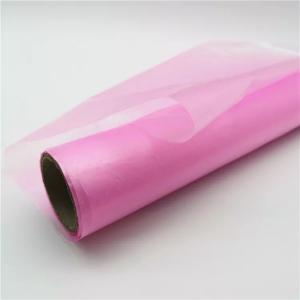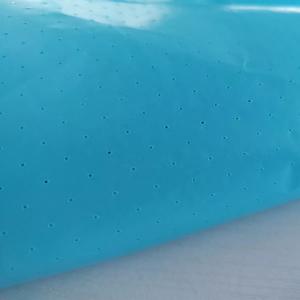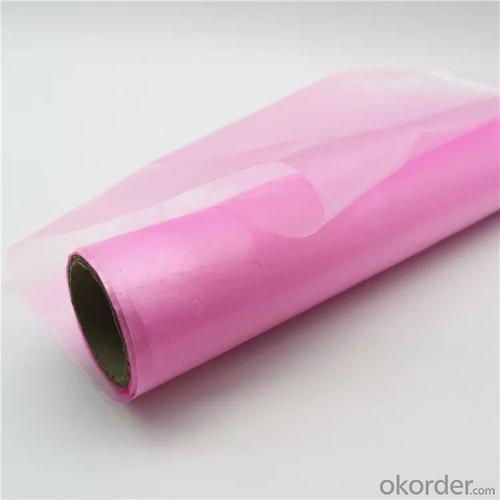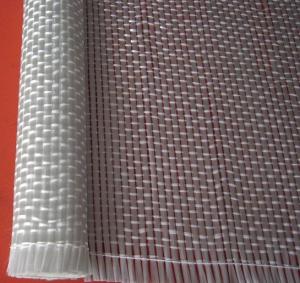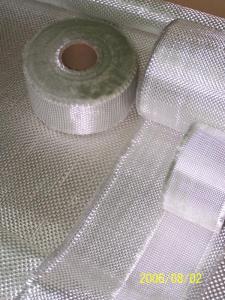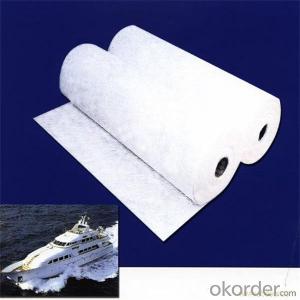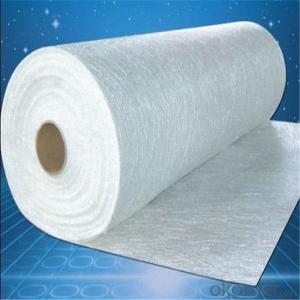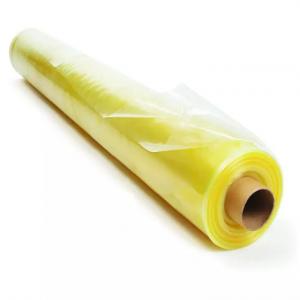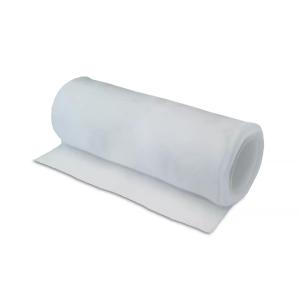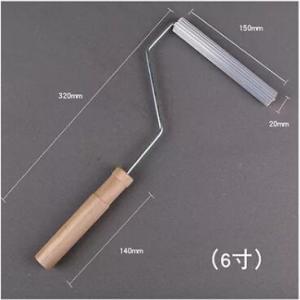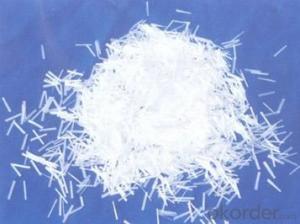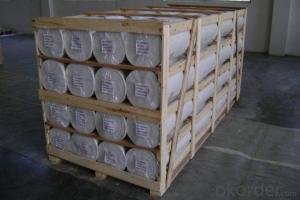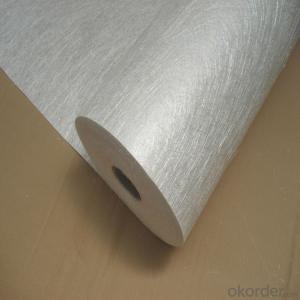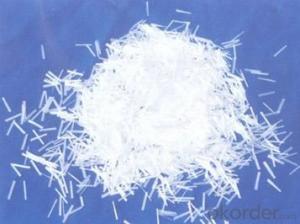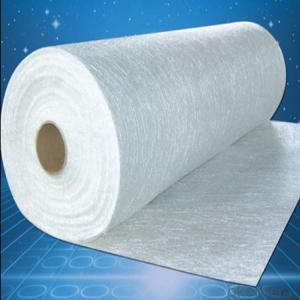Perforated Release film-vacuum infusion process
- Loading Port:
- Shanghai
- Payment Terms:
- TT or LC
- Min Order Qty:
- 200 m²
- Supply Capability:
- 20000 m²/month
OKorder Service Pledge
OKorder Financial Service
You Might Also Like
Perforated Release film
Product Description
Release film is a auxiliary material which is a isolation material in the process of composite production. It can be made into perforated and non perforated types. The perforated type is applied between the composite and suction rubber, and the non perforates type is applied between the suction rubber and molding.
Technique Data
Material:PE
Pore diameter:0.8mm ±0.2mm
Pitch:8mm±0.1mm
Thickness:30μ
Max. working temperature:120 ℃
Tensile strength:>25MPa
Elongation:>200%
Width:≤1.5m ±2mm
Length:600m or According to the request
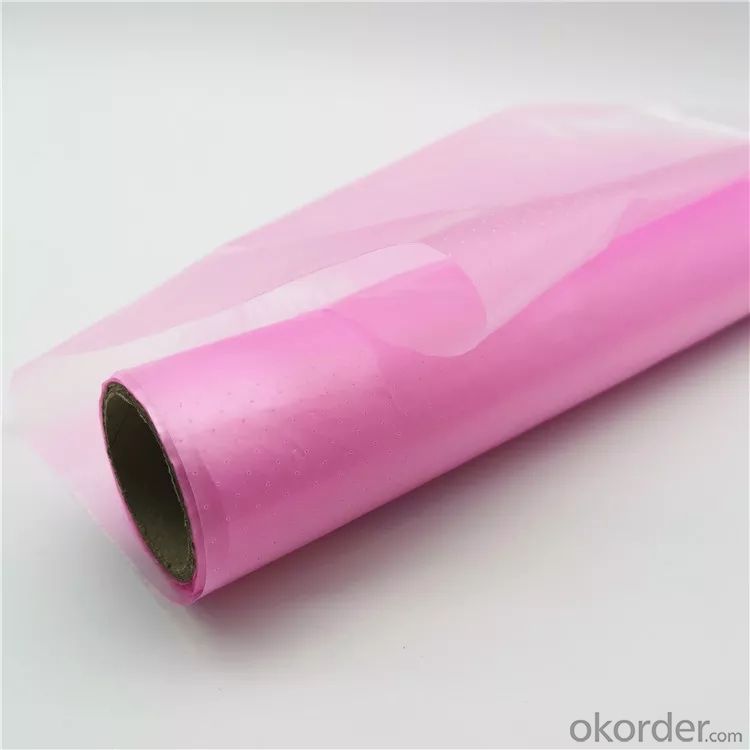
- Q:Can fiberglass chopped strand be used in aerospace interior components?
- Fiberglass chopped strand is indeed applicable for aerospace interior components. This lightweight and versatile material possesses exceptional strength and durability, making it widely utilized across various industries, including aerospace. The aerospace sector demands interior components that are both lightweight and capable of withstanding the rigorous conditions of flight. Fiberglass chopped strand fulfills these requirements, as it is lightweight and boasts high tensile strength. It finds extensive use in the production of panels, seat backs, overhead bins, and cabin partitions. Notably, fiberglass chopped strand exhibits exceptional fire resistance properties, which are of utmost importance in aerospace applications. It successfully adheres to the stringent fire safety regulations and standards set by aviation authorities. Moreover, the processing of fiberglass chopped strand is relatively straightforward, ensuring efficient and cost-effective manufacturing processes. It can be molded into diverse shapes and sizes, making it ideal for intricate aerospace interior designs. In summary, fiberglass chopped strand is an ideal material for aerospace interior components due to its lightweight nature, high strength, fire resistance, and ease of processing. Its utilization in the aerospace industry contributes to the safety, performance, and comfort of both passengers and crew members during flights.
- Q:Is fiberglass chopped strand compatible with polyester resin?
- Yes, fiberglass chopped strand is compatible with polyester resin. Both materials are commonly used together in various applications such as boat building, automotive parts, and construction. Polyester resin is a popular choice for bonding and reinforcing fiberglass chopped strand because it provides good adhesion, strength, and durability. The resin encapsulates the chopped strands, creating a strong composite material. However, it is important to note that the compatibility also depends on the specific type and brand of fiberglass chopped strand and polyester resin being used, so it is always recommended to check the manufacturer's guidelines and conduct a small-scale test before proceeding with a larger project.
- Q:How does the fiber aspect ratio affect the properties of fiberglass chopped strand?
- The fiber aspect ratio of fiberglass chopped strand refers to the length-to-diameter ratio of the fibers. A higher aspect ratio means the fibers are longer and thinner. The aspect ratio significantly affects the properties of fiberglass chopped strand. A higher aspect ratio generally leads to improved mechanical properties of the fiberglass, including higher strength, stiffness, and impact resistance. Longer fibers provide better load transfer between the matrix and reinforcement, resulting in enhanced structural integrity. They also contribute to increased resistance against crack propagation, improving the overall durability of the fiberglass material. Additionally, a higher aspect ratio can enhance the fiber-matrix bonding, resulting in improved interfacial adhesion. This enables better stress transfer between the fibers and the matrix, leading to increased overall performance of the fiberglass composite. Overall, the fiber aspect ratio plays a crucial role in determining the mechanical and physical properties of fiberglass chopped strand, making it an important factor to consider in various applications such as automotive parts, construction materials, and reinforcement for plastics.
- Q:How does the orientation of fiberglass chopped strand affect its strength?
- The orientation of fiberglass chopped strand plays a significant role in determining its strength. Fiberglass chopped strand consists of individual glass fibers that are randomly oriented and held together with a sizing agent. When these strands are incorporated into a composite material, their orientation can impact the overall strength of the final product. In general, the strength of fiberglass chopped strand is influenced by the alignment of the fibers with the applied load. Fibers that are oriented parallel to the load direction tend to provide the highest strength, as they can effectively carry and distribute the applied stress. This is known as the longitudinal or axial direction. On the other hand, fibers that are oriented perpendicular to the load direction, also known as the transverse direction, provide lower strength. This is because the fibers are less effective in resisting the applied stress and are more prone to breakage. Moreover, the transverse orientation can result in delamination or separation between the fibers and the resin matrix, leading to reduced overall strength. The strength of fiberglass chopped strand can also be influenced by the presence of any fiber misalignment or voids in the composite material. If the fibers are not uniformly distributed or properly aligned, it can create weak spots or areas of stress concentration, decreasing the overall strength of the material. Therefore, to maximize the strength of fiberglass chopped strand, it is essential to ensure proper fiber alignment and distribution within the composite material. This can be achieved through careful manufacturing processes, such as using uniform and controlled fiber orientation techniques, ensuring proper resin impregnation, and minimizing the presence of voids or defects. In summary, the orientation of fiberglass chopped strand is a critical factor in determining its strength. Proper fiber alignment and distribution can enhance the material's ability to withstand applied stress and ultimately contribute to its overall strength.
- Q:Is fiberglass chopped strand suitable for automotive body panels?
- Automotive body panels can be made using fiberglass chopped strand, which is a versatile material with several advantages for automotive applications. By being lightweight, it helps enhance fuel efficiency and overall vehicle performance. Additionally, its excellent strength-to-weight ratio makes it a durable option that can withstand impacts and resist deformation. The ability of chopped strand fiberglass to be easily molded and shaped into complex designs makes it particularly suitable for automotive body panels. This involves mixing the fiberglass strands with a resin matrix and then utilizing various molding techniques like compression molding or injection molding. Hence, this allows for the creation of body panels with precise dimensions and contours, ensuring a seamless fit on the vehicle. Besides, fiberglass exhibits good corrosion resistance, which is vital for automotive applications where body panels are exposed to diverse weather conditions and environmental factors. Furthermore, it possesses admirable thermal and electrical insulation properties, enhancing its suitability for automotive body panels. Overall, fiberglass chopped strand is an appropriate material for automotive body panels as it offers lightweight, durability, ease of molding, and resistance to corrosion. It has been extensively utilized in the automotive industry for many years and remains a favored choice for manufacturers.
- Q:What are the main applications of fiberglass chopped strand?
- Fiberglass chopped strand is a versatile material that finds numerous applications across various industries. The main applications of fiberglass chopped strand can be categorized into the following: 1. Construction: Fiberglass chopped strand is extensively used in the construction industry for reinforcing concrete structures. It adds tensile strength and durability to the concrete, making it resistant to cracks and other damages. It is commonly used in the construction of bridges, buildings, tunnels, and other infrastructure projects. 2. Composites: Fiberglass chopped strand is a key component in the manufacturing of composite materials. It is used to reinforce polymers, resins, and other matrix materials to create strong and lightweight composites. These composites find applications in industries like automotive, aerospace, marine, and sports equipment manufacturing. 3. Insulation: The excellent thermal and acoustic insulation properties of fiberglass chopped strand make it an ideal material for insulation applications. It is used to insulate walls, roofs, pipes, and other areas where thermal or acoustic insulation is required. Fiberglass chopped strand insulation helps in conserving energy, reducing noise transmission, and maintaining comfortable indoor environments. 4. Filtration: Fiberglass chopped strand is widely used in the production of various filtration media. Its high strength and chemical resistance make it suitable for applications like air filters, oil filters, water filters, and dust collectors. Fiberglass chopped strand filters are known for their high efficiency and long service life. 5. Electrical & Electronics: Due to its electrical insulation properties, fiberglass chopped strand is used in the manufacturing of electrical and electronic components. It is commonly used as insulation for wires and cables, printed circuit boards, transformers, and electrical appliances. It provides protection against electrical shocks and ensures reliable performance of these devices. 6. Automotive: Fiberglass chopped strand is extensively used in the automotive industry for various applications. It is used in the production of automotive parts like bumpers, body panels, interior trims, and engine components. Fiberglass chopped strand-reinforced composites offer high strength-to-weight ratio, corrosion resistance, and design flexibility, making them suitable for automotive applications. Overall, fiberglass chopped strand is a versatile material with a wide range of applications. Its strength, durability, thermal insulation, electrical insulation, and chemical resistance properties make it a preferred choice in various industries.
- Q:How does the fiber orientation of fiberglass chopped strand affect the mechanical properties of composites?
- The mechanical properties of composites are greatly influenced by the fiber orientation of fiberglass chopped strand. Fiberglass chopped strand is made up of short individual fibers that are randomly oriented in various directions. When these chopped strands are added to a composite material, the fiber orientation becomes a crucial factor in determining the overall strength, stiffness, and other mechanical properties of the resulting composite. In general, a well-aligned fiber orientation within the composite can result in improved mechanical properties. When the fibers are aligned in the same direction as the applied load or stress, they can effectively transfer the load and resist deformation, thereby increasing the strength and stiffness of the composite. This alignment also enhances the load-bearing capacity of the composite material. Conversely, a random or less aligned fiber orientation can lead to decreased mechanical properties. Randomly oriented fibers may not distribute the applied load effectively, causing stress concentrations and potential failure points within the composite. This can result in reduced strength, stiffness, and overall performance. Additionally, the fiber orientation can also impact other mechanical properties such as impact resistance, fatigue resistance, and dimensional stability. Proper fiber alignment can enhance these properties, making the composite material more resistant to impacts, cyclic loading, and dimensional changes. In conclusion, the fiber orientation of fiberglass chopped strand has a significant impact on the mechanical properties of composites. A well-aligned fiber orientation can enhance strength, stiffness, impact resistance, fatigue resistance, and dimensional stability. Conversely, a random or less aligned fiber orientation can lead to reduced performance in these aspects. Therefore, careful consideration of fiber orientation is crucial in the design and manufacture of composites with desired mechanical properties.
- Q:Can fiberglass chopped strand be used in the production of insulation boards?
- Yes, fiberglass chopped strand can be used in the production of insulation boards. Fiberglass chopped strand is commonly used as a reinforcement material in various applications, including insulation boards. It provides excellent thermal insulation properties, as well as strength and durability. The chopped strands are typically mixed with a resin binder and other additives to form a homogeneous mixture, which is then molded into insulation boards of desired shapes and sizes. The fiberglass chopped strand helps to enhance the structural integrity and insulating capabilities of the boards, making them suitable for use in various industries, such as construction, automotive, and aerospace.
- Q:How does the curing time of fiberglass chopped strand-reinforced composites compare to other reinforcing materials?
- The curing time of fiberglass chopped strand-reinforced composites is typically shorter compared to other reinforcing materials.
- Q:Is fiberglass chopped strand available in different colors?
- No, fiberglass chopped strand is typically not available in different colors. The strands are usually white or off-white in color. However, once the chopped strands are mixed with a resin or used in a composite material, they can be colored using pigments or dyes to achieve the desired color.
1. Manufacturer Overview |
|
|---|---|
| Location | |
| Year Established | |
| Annual Output Value | |
| Main Markets | |
| Company Certifications | |
2. Manufacturer Certificates |
|
|---|---|
| a) Certification Name | |
| Range | |
| Reference | |
| Validity Period | |
3. Manufacturer Capability |
|
|---|---|
| a)Trade Capacity | |
| Nearest Port | |
| Export Percentage | |
| No.of Employees in Trade Department | |
| Language Spoken: | |
| b)Factory Information | |
| Factory Size: | |
| No. of Production Lines | |
| Contract Manufacturing | |
| Product Price Range | |
Send your message to us
Perforated Release film-vacuum infusion process
- Loading Port:
- Shanghai
- Payment Terms:
- TT or LC
- Min Order Qty:
- 200 m²
- Supply Capability:
- 20000 m²/month
OKorder Service Pledge
OKorder Financial Service
Similar products
Hot products
Hot Searches
Related keywords
